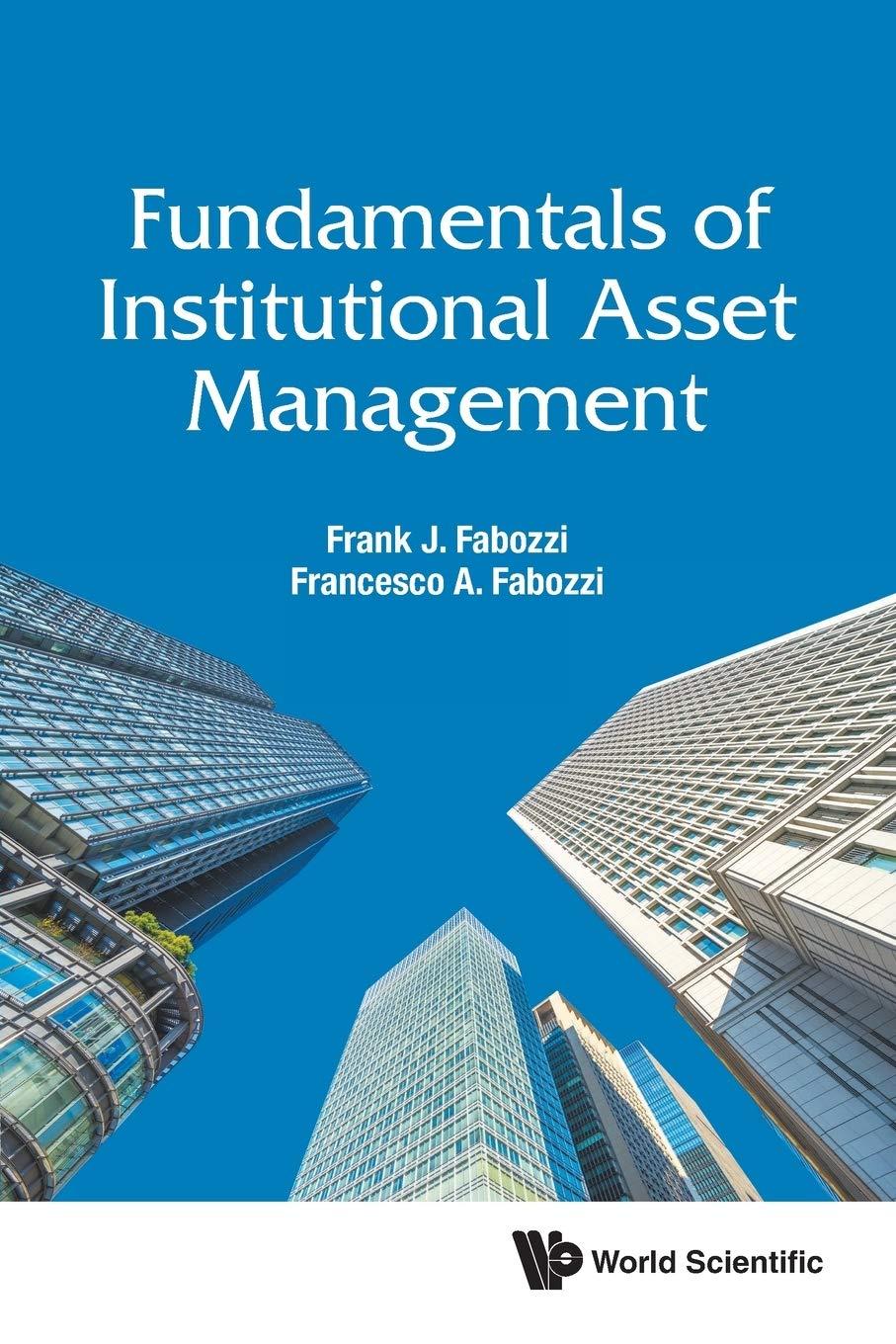Question
Time-varying betas (28 points, 4 each) Consider an economy over three periods, t = 0, t = 1 and t = 2. At t =
Time-varying betas (28 points, 4 each)
Consider an economy over three periods, t = 0, t = 1 and t = 2. At t = 0, the market
stock index is trading at a value of $100. At t = 1, the market either rises by 20 with
probability 3/4 or falls by 20 with probability 1/4. Following either outcome at t = 1,
the market either increases by 20 with probability 3/4 or falls by 20 with probability 1/4.
Thus the highest possible market value at t = 2 is 140, and the lowest is 60. The market
pays no dividends, and a riskfree bond earns a safe net return Rf = 0 each period.
Consider a European put on the market with strike price X = $100 expiring at t = 2.
(a) Draw the event tree of this economy. For all nodes at t = 2, compute the probability
of reaching that node and the payo. of the put option in that node.
(b) Consider the node at t = 1 when the market has gone down. Call this .node X..
Construct a portfolio of the market and the riskfree bond at node X that replicates the
subsequent payo.s of the put at t = 2. Under no arbitrage, what should be the put price
at node X? What is the put price at the other node at t = 1?
2
(c) Now construct a portfolio of the market and the bond at t = 0 that replicates the
put prices at t = 1. Under no arbitrage, what is the put price at t = 0?
(d)We will now verify CAPM for the period following node X. First compute the realized
net return of the market Rm between t = 1 and t = 2 for both possible outcomes after
node X. Also compute the realized net return of the put Rp between t = 1 and t = 2 for
the two outcomes after X. What are the expected returns ERm and ERp at node X?
(e)We will now compute the beta of the put at node X using the regression R-Rf =
alpha+beta (Rm - Rf )+epsilon. In (d) we computed two realizations of Rp and Rm corresponding
to the two possible outcomes after node X. The regression equation must hold for both of
these realizations. It turns out that "epsilon will be zero here, so we have two equations for two
unknowns, alpha and beta. Solve these equations. What is the beta of the put? (Intuitively:
by what factor do you have to multiply Rm to get Rp?) Using this beta, does CAPM
correctly predict the expected return of the put at node X?
(f) Now compute the beta of the put between t = 0 and t = 1 using a similar procedure.
Is this beta the same as in (e)? What are the expected returns of the market and the put
between t = 0 and t = 1? Does the CAPM prediction hold for the put for this period?
(g) Now consider the put return between t = 0 and t = 2. It can be shown that the beta
of the put over this horizon is -2.5. Use this to check whether CAPM holds for the put
between t = 0 and t = 2. What is the alpha of the put for this investment horizon? If
the alpha is non-zero, do you think that EMH fails, or that CAPM is not the right asset
pricing model between t = 0 and t = 2? What may be a problem with CAPM here?
Step by Step Solution
There are 3 Steps involved in it
Step: 1

Get Instant Access to Expert-Tailored Solutions
See step-by-step solutions with expert insights and AI powered tools for academic success
Step: 2

Step: 3

Ace Your Homework with AI
Get the answers you need in no time with our AI-driven, step-by-step assistance
Get Started


